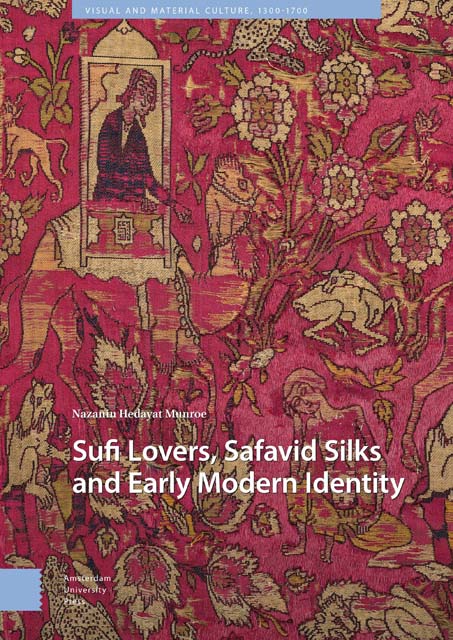Book contents
- Frontmatter
- Dedication
- Table of Contents
- Acknowledgments
- List of Illustrations
- Note on Transliteration
- Introduction: Material Culture and Mysticism in the Persianate World
- Part I
- Part II
- Conclusion
- Appendix A List of Khamsa Silks
- Appendix B Summary of ‘Shirin and Khusrau’ by Amir Khusrau Dihlavi
- Appendix C Summary of ‘Majnun and Layla’ by Amir Khusrau Dihlavi
- Glossary of Textile Terms
- Glossary of Persian and Arabic Terms
- List of Historic Figures
- Index
3 - Weaving Stories, Weaving Self: Layla and Majnun as Sufi Icons
Published online by Cambridge University Press: 19 April 2023
- Frontmatter
- Dedication
- Table of Contents
- Acknowledgments
- List of Illustrations
- Note on Transliteration
- Introduction: Material Culture and Mysticism in the Persianate World
- Part I
- Part II
- Conclusion
- Appendix A List of Khamsa Silks
- Appendix B Summary of ‘Shirin and Khusrau’ by Amir Khusrau Dihlavi
- Appendix C Summary of ‘Majnun and Layla’ by Amir Khusrau Dihlavi
- Glossary of Textile Terms
- Glossary of Persian and Arabic Terms
- List of Historic Figures
- Index
Summary
Abstract
Silks depicting Layla and Majnun are examined with the corresponding narrative in the Khamsa of Nizami Ganjavi. The tale is summarized and analyzed as an allegory of the Sufi concept of the evolution of humankind through love, as Majnun is transformed by Nizami from a love-struck madman into the prototype for Sufi mystic practice. Two silk designs are signed by Ghiyath al-Din illustrating Layla visiting Majnun in the wilderness, a scene not found in Nizami’s Khamsa. The concept of javab-gui (‘literary response’) is presented as the foundation of Persian epic poetry. Amir Khusrau (d. 1325), the Sufi Turco-Indian poet laureate of Delhi, is discussed as the author upon whose Khamsa the scenes are derived. The relationship between poetry and textile weaving is analyzed through passages from Persian poetry.
Keywords: Work of Ghiyath, Qays ibn al-Mulawwah, Amir Khusrau Dihlavi, Bihzad painting, Sanwalah painting, Chishti Sufi
The relationships between Nizami’s poetic narrative, manuscript painting and textile design present more inconsistencies when taking a close look at the other set of Khamsa lovers, Layla and Majnun. Unlike the close comparison to illustrations from Nizami’s ‘Khusrau and Shirin,’ which retain the basic elements of the narrative in each rendition of the design, silk textiles depicting the characters Layla and Majnun differ from illustrations of Nizami’s text and do not retain the same level of iconographic consistency as a group. In fact, they do not seem to be corresponding to the same Khamsa, presenting new interpretations of identity, patronage and provenance for this sub-group of silks. This chapter will compare poetry and paintings of Layla and Majnun in Nizami’s original to the Khamsa composed as javab-gui by the late-thirteenth-century poet Amir Khusrau Dihlavi in India, who altered the narrative of love and separation as he traversed his own Sufi path. Careful examination of the iconography in painting and silks leads to new conclusions in the potential provenance of silks depicting the lovers. The chapter culminates in a study of the poetry woven into the silks, and poetic metaphors of weavers and textile-making.
The legend of Layla and Majnun is dated as early as the seventh century CE and originates from the northern Arabian Peninsula.
- Type
- Chapter
- Information
- Sufi Lovers, Safavid Silks and Early Modern Identity , pp. 83 - 112Publisher: Amsterdam University PressPrint publication year: 2023



